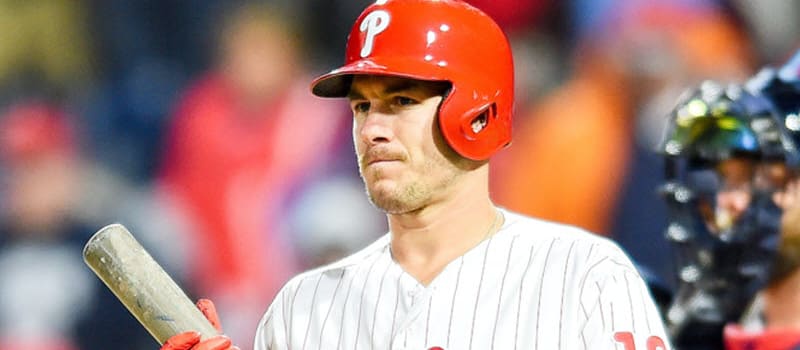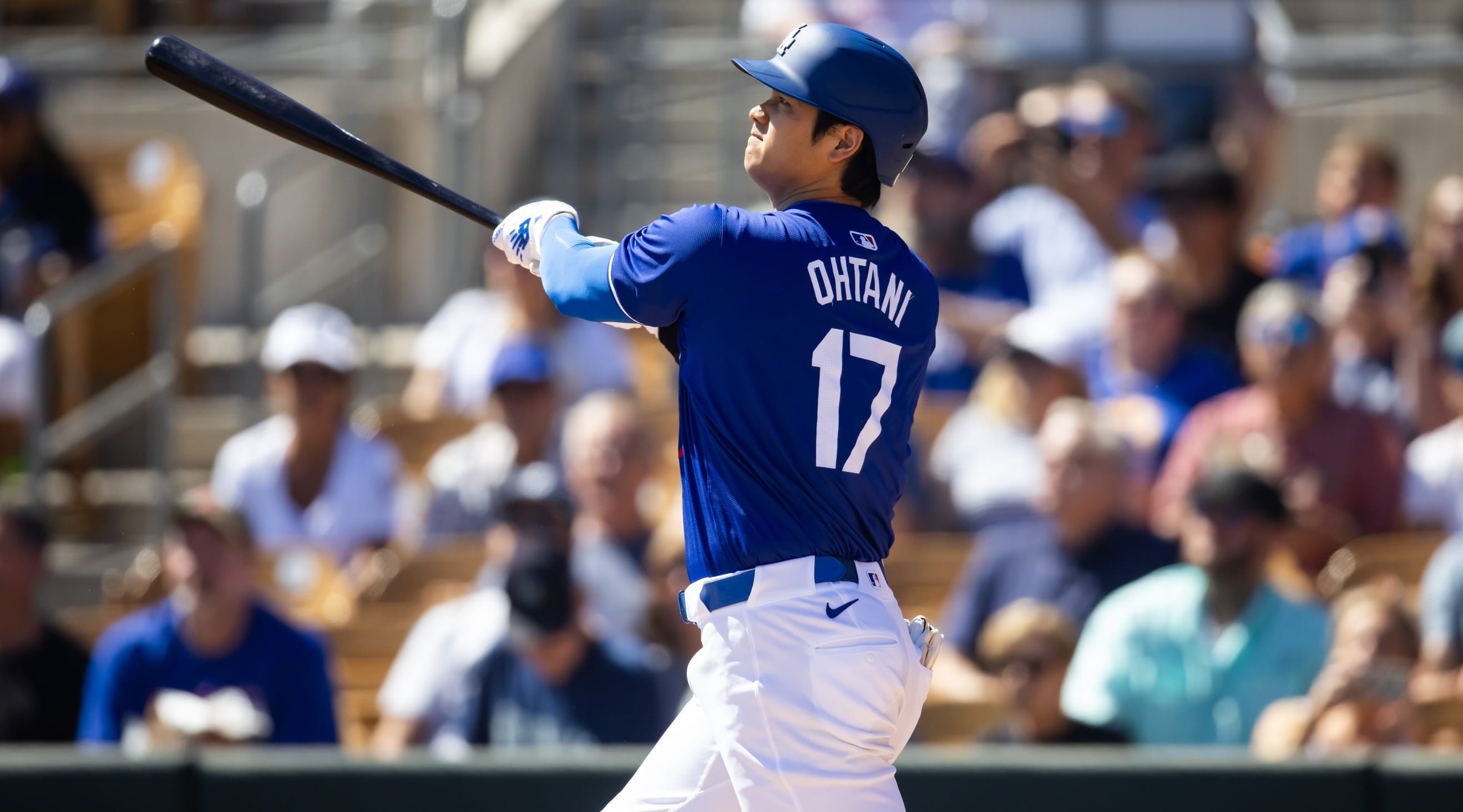We might not ever reach the stabilization point for all that many stats this season, as 60 games really isn't very many in baseball, though the 23 games that several teams have played is meaningful enough to make several stats relevant.
Purely physical stats become trustworthy quite early, as it only takes once instance of a player throwing ridiculously hard or hitting the ball ridiculously hard to confirm than they can indeed throw or hit ridiculously hard. Strikeout rate and walk rate are also becoming relevant, so if a player's breakout (or collapse) comes with a dramatic change in one of those numbers, it's worth a second look.
Of course, not every team has played that many games — the Cardinals have played just eight. At least they're finally back after a coronavirus-related layoff kept them out of action for more than two weeks. I haven't listed the entire Cardinals roster as "risers," but I certainly could have. They're still scheduled to play their entire 60-game schedule, which could make their hitters interesting trade targets; they have a full 40 percent more games remaining than the teams who have played the most games.
If you can trade a player for a Cardinal who's, say, 20 percent worse than the player you give up, you'll be winning the deal, as you'll get more value out of the Cardinal due to his considerably longer schedule. While it's likely that many Cardinals could play worse due to their heavy workload, that's likely going
We might not ever reach the stabilization point for all that many stats this season, as 60 games really isn't very many in baseball, though the 23 games that several teams have played is meaningful enough to make several stats relevant.
Purely physical stats become trustworthy quite early, as it only takes once instance of a player throwing ridiculously hard or hitting the ball ridiculously hard to confirm than they can indeed throw or hit ridiculously hard. Strikeout rate and walk rate are also becoming relevant, so if a player's breakout (or collapse) comes with a dramatic change in one of those numbers, it's worth a second look.
Of course, not every team has played that many games — the Cardinals have played just eight. At least they're finally back after a coronavirus-related layoff kept them out of action for more than two weeks. I haven't listed the entire Cardinals roster as "risers," but I certainly could have. They're still scheduled to play their entire 60-game schedule, which could make their hitters interesting trade targets; they have a full 40 percent more games remaining than the teams who have played the most games.
If you can trade a player for a Cardinal who's, say, 20 percent worse than the player you give up, you'll be winning the deal, as you'll get more value out of the Cardinal due to his considerably longer schedule. While it's likely that many Cardinals could play worse due to their heavy workload, that's likely going to be more than made up for by their sheer number of games in most cases. This probably applies to only St. Louis hitters, as pitchers' workloads have to be carefully managed regardless of how many doubleheaders are on the table.
Odd situations like that one are sure to continue arising throughout this very strange season, but thankfully, most of the league has been able to just play baseball. This week's column will tilt more toward early season statistical performances than the previous columns this season, since, as mentioned, at least some stats are beginning to look quite noteworthy at this still early stage.
RISERS
 J.T. Realmuto, C, Phillies: Realmuto has emerged as the top catcher in the game the last few seasons, but he's leaving no doubt about that fact in his contract season this year. While he'll have only 60 games to raise his stock, he's certainly making the most of them. Through his first 65 plate appearances, he's hitting .300/.354/.717 with eight homers, just one shy of the league lead and three more than any other catcher. To get an idea of just how much Realmuto has dominated the catcher pool this year, check out our Earned Auction Values, where Realmuto is worth nearly $10 more than the next-best catcher, Pedro Severino. (If you had Severino as the second-best catcher this year, raise your hand.) Realmuto has been a strong all-around offensive player for several years, though this kind of power is a surprise. It's backed up by his Statcast data, however, as he's increased his barrel rate from 8.7 percent to 18.6 percent and increased his hard-hit rate from 41.1 percent to 51.2 percent.
J.T. Realmuto, C, Phillies: Realmuto has emerged as the top catcher in the game the last few seasons, but he's leaving no doubt about that fact in his contract season this year. While he'll have only 60 games to raise his stock, he's certainly making the most of them. Through his first 65 plate appearances, he's hitting .300/.354/.717 with eight homers, just one shy of the league lead and three more than any other catcher. To get an idea of just how much Realmuto has dominated the catcher pool this year, check out our Earned Auction Values, where Realmuto is worth nearly $10 more than the next-best catcher, Pedro Severino. (If you had Severino as the second-best catcher this year, raise your hand.) Realmuto has been a strong all-around offensive player for several years, though this kind of power is a surprise. It's backed up by his Statcast data, however, as he's increased his barrel rate from 8.7 percent to 18.6 percent and increased his hard-hit rate from 41.1 percent to 51.2 percent.
 Drew Pomeranz, RP, Padres: Kirby Yates' elbow injury means that Pomeranz should have a firm grip on the Padres' closer role for the foreseeable future. He'd already been the team's saves leader, saving four games to Yates' two, and the difference between their ERAs — 0.00 for Pomeranz and 12.46 for Yates — certainly made that seem like the correct hierarchy. While that ERA is obviously nothing close to sustainable, as his .071 BABIP will rise and his 100 percent strand rate will fall, it's hard to be disappointed with his 37.0 percent strikeout rate in his first season spent fully in the bullpen. He showed signs of similar dominance out of the pen after a midseason trade to the Brewers last season, striking out 45.0 percent of batters en route to a 2.39 ERA in 26.1 innings for Milwaukee, so it shouldn't be too big of a surprise to see him remain a shutdown arm.
Drew Pomeranz, RP, Padres: Kirby Yates' elbow injury means that Pomeranz should have a firm grip on the Padres' closer role for the foreseeable future. He'd already been the team's saves leader, saving four games to Yates' two, and the difference between their ERAs — 0.00 for Pomeranz and 12.46 for Yates — certainly made that seem like the correct hierarchy. While that ERA is obviously nothing close to sustainable, as his .071 BABIP will rise and his 100 percent strand rate will fall, it's hard to be disappointed with his 37.0 percent strikeout rate in his first season spent fully in the bullpen. He showed signs of similar dominance out of the pen after a midseason trade to the Brewers last season, striking out 45.0 percent of batters en route to a 2.39 ERA in 26.1 innings for Milwaukee, so it shouldn't be too big of a surprise to see him remain a shutdown arm.
 Aaron Nola, SP, Phillies: Nola struggled on Opening Day, allowing four runs in five innings of work against the Marlins. He then had to wait 12 days for his next outing due to fears that the Phillies had been caught up in the Marlins' coronavirus outbreak. The break seemed to have suited him well, as he's been incredibly dominant in three starts since returning. In each of those starts, he's allowed no more than one run on no more than three hits while striking out no fewer than eight. On the season as a whole, he's striking out a remarkable 39.8 percent of batters while walking just 4.3 percent, leading to a 2.05 ERA that's well supported by a 2.26 FIP and a 1.89 xFIP.
Aaron Nola, SP, Phillies: Nola struggled on Opening Day, allowing four runs in five innings of work against the Marlins. He then had to wait 12 days for his next outing due to fears that the Phillies had been caught up in the Marlins' coronavirus outbreak. The break seemed to have suited him well, as he's been incredibly dominant in three starts since returning. In each of those starts, he's allowed no more than one run on no more than three hits while striking out no fewer than eight. On the season as a whole, he's striking out a remarkable 39.8 percent of batters while walking just 4.3 percent, leading to a 2.05 ERA that's well supported by a 2.26 FIP and a 1.89 xFIP.
 Sonny Gray, SP, Reds: Like Nola, Gray appears to be reaching another level early this season. He's had one unimpressive start this season, allowing four runs in 5.1 innings against the Brewers on Aug. 9, but he hasn't allowed more than one earned run in any of his other four outings. Perhaps most impressively, he's struck out at least seven batters in all five of his starts and has already reached double-digit strikeouts twice, something he did just three times in 31 starts last year and just four times in 146 starts in his first six major-league seasons. His 28.9 percent strikeout rate last season was already rather impressive given that he'd generally produced average at best numbers in that category, but his 37.2 percent this year could place him in an entirely new tier of pitchers.
Sonny Gray, SP, Reds: Like Nola, Gray appears to be reaching another level early this season. He's had one unimpressive start this season, allowing four runs in 5.1 innings against the Brewers on Aug. 9, but he hasn't allowed more than one earned run in any of his other four outings. Perhaps most impressively, he's struck out at least seven batters in all five of his starts and has already reached double-digit strikeouts twice, something he did just three times in 31 starts last year and just four times in 146 starts in his first six major-league seasons. His 28.9 percent strikeout rate last season was already rather impressive given that he'd generally produced average at best numbers in that category, but his 37.2 percent this year could place him in an entirely new tier of pitchers.
 Brandon Lowe, 2B, Rays: The Rays are famous for their heavy usage of platoons, but Lowe appears to be close to claiming a true everyday role, starting against four of the last five lefties the Rays have faced. It's hard to argue that he doesn't deserve to be in the lineup everyday, as he's hitting .338/.404/.738 with seven homers in his first 89 plate appearances, including one homer in each of his last four games. That power isn't too surprising for Lowe, who homered 17 times in 82 games last season. What is surprising is his sudden ability to make contact, as he's trimmed his strikeout rate from a worryingly high 34.6 percent last year to a nearly average 24.7 percent this season.
Brandon Lowe, 2B, Rays: The Rays are famous for their heavy usage of platoons, but Lowe appears to be close to claiming a true everyday role, starting against four of the last five lefties the Rays have faced. It's hard to argue that he doesn't deserve to be in the lineup everyday, as he's hitting .338/.404/.738 with seven homers in his first 89 plate appearances, including one homer in each of his last four games. That power isn't too surprising for Lowe, who homered 17 times in 82 games last season. What is surprising is his sudden ability to make contact, as he's trimmed his strikeout rate from a worryingly high 34.6 percent last year to a nearly average 24.7 percent this season.
FALLERS
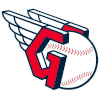 Mike Clevinger, Zach Plesac, SP, Indians: Plesac was on fire through his first three starts of the year, striking out 24 batters in 21 innings while walking just two, helping him to a 1.29 ERA. Clevinger hasn't been quite so hot, struggling to a 22.1 percent strikeout rate and a 14.7 percent walk rate, though he'd yet to be really punished, as he maintained a solid 3.24 ERA despite those numbers. Performance reasons aren't the cause for their inclusion here, however. The pair violated health protocols by going out for a celebratory night on the town following Plesac's most recent start, and both were sent home by the team and placed on the restricted list before eventually being optioned. It's tough to play either in weekly leagues this week, as they'll have to remain off the roster for 10 days unless Cleveland places someone on the injured list. The team is understandably very upset with both pitchers, as their actions look even worse given the context that their teammate, Carlos Carrasco, is in a high-risk group for coronavirus due to his battle with leukemia. It's possible both pitchers wind up being punished by remaining off the roster long enough to deny them a year of service time.
Mike Clevinger, Zach Plesac, SP, Indians: Plesac was on fire through his first three starts of the year, striking out 24 batters in 21 innings while walking just two, helping him to a 1.29 ERA. Clevinger hasn't been quite so hot, struggling to a 22.1 percent strikeout rate and a 14.7 percent walk rate, though he'd yet to be really punished, as he maintained a solid 3.24 ERA despite those numbers. Performance reasons aren't the cause for their inclusion here, however. The pair violated health protocols by going out for a celebratory night on the town following Plesac's most recent start, and both were sent home by the team and placed on the restricted list before eventually being optioned. It's tough to play either in weekly leagues this week, as they'll have to remain off the roster for 10 days unless Cleveland places someone on the injured list. The team is understandably very upset with both pitchers, as their actions look even worse given the context that their teammate, Carlos Carrasco, is in a high-risk group for coronavirus due to his battle with leukemia. It's possible both pitchers wind up being punished by remaining off the roster long enough to deny them a year of service time.
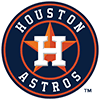 Yordan Alvarez, DH, Astros: After missing all of summer camp due to a positive coronavirus test, Alvarez didn't make his season debut until Friday. He lasted just two days before a sore knee caused him to be scratched from the lineup. While there's no indication that this particular injury is a serious one, it serves as a reminder of the young slugger's fragility. He dealt with knee issues in spring training and was still running gingerly five months later in mid-August. It may be tough to rely on him being in the lineup every day this year, and persistent knee issues could put a dent in his dynasty stock.
Yordan Alvarez, DH, Astros: After missing all of summer camp due to a positive coronavirus test, Alvarez didn't make his season debut until Friday. He lasted just two days before a sore knee caused him to be scratched from the lineup. While there's no indication that this particular injury is a serious one, it serves as a reminder of the young slugger's fragility. He dealt with knee issues in spring training and was still running gingerly five months later in mid-August. It may be tough to rely on him being in the lineup every day this year, and persistent knee issues could put a dent in his dynasty stock.
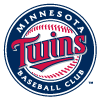 Jose Berrios, SP, Twins: In theory, this should be Berrios' best season of his career, as the Twins benefit greatly from the modified schedule this season with a full third of their games coming against the Tigers and Royals. While two of Berrios' five starts have come against the Royals (and a third has come against the Pirates), he hasn't come close to delivering on that potential, as he's struggled to a 5.92 ERA. His 21.6 percent strikeout rate is his lowest mark since his 14-start debut back in 2016, while the same is true of his 11.7 percent walk rate. The latter is perhaps the more worrying figure, as his 6.1 percent walk rate last year was quite good, while his 23.2 percent strikeout rate was merely average. When he's not walking batters, he's getting hit harder than ever, as hitters' barrel rate against him has jumped to 12.3 percent, nearly double his career 6.2 percent.
Jose Berrios, SP, Twins: In theory, this should be Berrios' best season of his career, as the Twins benefit greatly from the modified schedule this season with a full third of their games coming against the Tigers and Royals. While two of Berrios' five starts have come against the Royals (and a third has come against the Pirates), he hasn't come close to delivering on that potential, as he's struggled to a 5.92 ERA. His 21.6 percent strikeout rate is his lowest mark since his 14-start debut back in 2016, while the same is true of his 11.7 percent walk rate. The latter is perhaps the more worrying figure, as his 6.1 percent walk rate last year was quite good, while his 23.2 percent strikeout rate was merely average. When he's not walking batters, he's getting hit harder than ever, as hitters' barrel rate against him has jumped to 12.3 percent, nearly double his career 6.2 percent.
 Rafael Devers, 3B, Red Sox: Excellent contact drove Devers' breakout last season, as he struck out just 17.0 percent of the time, helping him hit .311.Those numbers could hardly look more different this season, as he's suddenly striking out 30.1 percent of the time while hitting just .182. When he does make contact, he's beating the ball into the ground more than ever before, as he has a career-high 50.0 percent groundball rate. He did miss a pair of games last week with a sore ankle, but it's not clear whether that can be blamed for the entirety of his struggles. Even if and when he eventually sorts things out, his profile may be worse than it originally appeared, as the Red Sox's lineup has struggled overall this season, ranking 22nd in wRC+.
Rafael Devers, 3B, Red Sox: Excellent contact drove Devers' breakout last season, as he struck out just 17.0 percent of the time, helping him hit .311.Those numbers could hardly look more different this season, as he's suddenly striking out 30.1 percent of the time while hitting just .182. When he does make contact, he's beating the ball into the ground more than ever before, as he has a career-high 50.0 percent groundball rate. He did miss a pair of games last week with a sore ankle, but it's not clear whether that can be blamed for the entirety of his struggles. Even if and when he eventually sorts things out, his profile may be worse than it originally appeared, as the Red Sox's lineup has struggled overall this season, ranking 22nd in wRC+.


